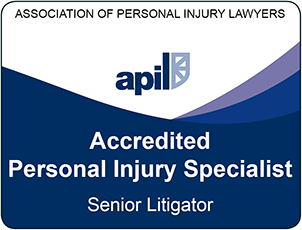In this article, we explain the symptoms of cerebral palsy
Signs and Symptoms
Symptoms of cerebral palsy can be as simple as having difficulty with fine motor tasks like writing or using scissors, or as profound as being unable to maintain balance or walk. Severely afflicted patients may have involuntary movements, such as uncontrollable hand motions and drooling. Others suffer from associated medical disorders, such as seizures and mental retardation.
Spastic CP is the most common type of cerebral palsy. It causes the muscles to be stiff and permanently contracted. Spastic cerebral palsy is often subclassified as one of five types that describe the affected limbs. The names of these types combine a Latin prefix describing the number of affected limbs (e.g. di- means two) with the term plegia or paresis, meaning paralyzed or weak:
• Diplegia – either both arms or both legs
• Hemiplegia – limbs on only one side of the body
• Quadriplegia – all four limbs
• Monoplegia – one limb (extremely rare)
• Triplegia – three limbs (extremely rare)
Spastic diplegia affects the legs more than the arms. The legs often turn in and cross at the knees. This causes a scissors gait, in which the hips are flexed, the knees nearly touch, the feet are flexed, and the ankles turn out from the leg, causing toe-walking. Learning disabilities and seizures are less common than in spastic hemiplegia.
Persons with spastic hemiplegia (hemiparesis) also may experience hemiparetic tremors – uncontrollable shaking of the limbs on one side of the body. Severe hemiparetic tremors can seriously impair movement. The arm is generally affected more than the leg. Learning disabilities, vision problems, seizures, and dysfunction of the muscles of the mouth and tongue are classic symptoms.
Spastic quadriplegia involves all four limbs. There is dysfunction of the muscles of the mouth and tongue, seizures, medical complications, and increased risk for cognitive difficulties.
Athetoid (or dyskinetic) cerebral palsy is characterized by slow, uncontrolled, writhing movements of the hands, feet, arms, or legs (athetosis). Patients also may have abrupt, irregular, jerky movements (chorea), a combination (choreoathetosis), or slow rhythmic movements with muscle tone abnormalities and abnormal postures (dystonia).
The muscles of the face and tongue may be affected, causing grimacing and/or drooling. When the muscles that control speech are affected, the patient experiences dysarthria (abnormal pronunciation of speech). Hearing loss is commonly associated with this form of CP.
Ataxic cerebral palsy affects balance and depth perception. Persons with ataxic CP have poor coordination and walk unsteadily, usually placing their feet far apart. Many have trouble with quick or precise movements, like writing or buttoning a shirt. Some also have intention tremor, in which a voluntary movement, like reaching for an object, sets off trembling in the limb. The tremor becomes more intense as the person nears the target object.
Mixed CP involves two or more types of cerebral palsy. While any mix of types and subtypes can occur, the most common are athetodic-spastic-diplegic and athetoid-spastic-hemiplegic; the least common is athetoid-ataxic. It is possible to have a mix of all three (spastic-athetoid-ataxic).
Complications
Some people with CP have associated disorders, such as impaired intellectual development, seizures, failure to grow and thrive, and vision and sense of touch problems.
Roughly a third of patients with CP also have mild intellectual impairment; another third are moderately or severely impaired; and the remainder, intellectually normal. Mental impairment is most common in children with spastic quadriplegia.
As many as half of all patients with cerebral palsy have seizures in which uncontrolled bursts of electricity disrupt the brain’s normal pattern of electrical activity. Seizures that recur without a direct trigger, such as a fever, are classified as epilepsy. Seizures generally are tonic-clonic or partial.
Tonic-clonic seizures spread throughout the brain, typically causing the patient to cry out, followed by unconsciousness, twitching legs and arms, convulsive body movements, and loss of bladder control.
Partial seizures are confined to one part of the brain and may be simple or complex. Simple partial seizures cause muscle twitching, chewing movement, and numbness or tingling. Complex partial seizures can produce hallucinations; staggering, random movement; and impaired consciousness or confusion.
Children with moderate-to-severe cerebral palsy, especially those with spastic quadriplegia, often experience failure to grow or thrive – infants fail to gain weight normally; young children may be abnormally short; and teenagers may be short for their age and may have slow sexual development. These phenomena may be caused by a combination of poor nutrition and damage to the brain centers that control growth.
Some patients, particularly those with spastic hemiplegia, have muscles and limbs that are smaller than normal. Limbs on the side of the body affected by CP may grow slower than those on the other side. Hands and feet are most severely affected. The affected foot in cases of hemiplegia usually is the smaller of the two, even in patients who walk, suggesting the size difference is due not to disuse but to a disrupted growth process.
Vision and hearing problems are more common in people with cerebral palsy than in the general population. Differences in the left and right eye muscles often cause the eyes to be misaligned. This condition, called strabismus, causes double vision; in children, however, the brain often adapts by ignoring signals from one eye. Because strabismus can lead to poor vision and impaired depth perception, some physicians recommend corrective surgery.
Patients with hemiparesis may have hemianopia, a condition marked by impaired vision or blindness in half of the visual field in one or both eyes. A related condition, called homonymous hemianopia, causes impairment in the right or left half of the visual fields in both eyes.
Sensations of touch or pain may be impaired. A patient with stereognosis, for example, has difficulty perceiving or identifying the form and nature of an object placed in their hand using the sense of touch alone.
Hip dislocation, curvature of the spine (scoliosis), incontinence, constipation, tooth decay (dental caries), bronchitis, skin sores, and asthma are other complications commonly experienced by people with CP.
Risk Factors
Infants at the highest risk for developing cerebral palsy exhibit one or more of these factors: premature; low birth weight (<5 lb 7 1/2 oz); do not cry within 5 minutes of delivery; sustained on a ventilator more than 4 weeks; brain hemorrhage.
Other risk factors include the following:
• Complications in pregnant mother (e.g. vaginal bleeding after 6th month, proteinuria, hyperthyroidism, high blood pressure, Rh incompatibility, mental retardation, seizures)
• Breech birth (born feet or buttocks first)
• Labour and delivery complications (vascular or respiratory problems; may indicate brain damage or abnormal brain development)
• Multiple births (e.g. twins, triplets; CP may be due to prematurity or intrauterine growth retardation)
• Birth defects (e.g. malformation of spinal bones, hernia in groin area, abnormally small jawbone, microcephaly)
• Newborn seizures
• Low Apgar score – Infant heart rate, breathing, muscle tone, reflexes, and skin colour are each scored as 0 (low), 1 (intermediate), or 2 (normal) after delivery. A total score of 7-10 at 5 minutes is considered normal; 4-6, intermediate; and 0-3, low. Scores that remain low 10-20 minutes after delivery indicate increased risk for CP.
Causes
Acquired
Approximately 10% to 20% of children with cerebral palsy acquire it after birth, typically from brain damage sustained in the first few months or years of life. In such cases, the disorder may result from brain infections like bacterial meningitis or viral encephalitis, or from head trauma sustained from an accident, fall, or inflicted injuries (e.g. shaken baby syndrome).
Congenital
The cause or causes of congenital CP – the type that is present at birth – often are unknown and many cases go undetected for months. Certain events during pregnancy, labour, and delivery can damage motor centers in the developing brain and cause cerebral palsy. However, birth complications account for only about 3-13% of congenital CP cases.
Infections during pregnancy, such as German measles (rubella), can damage the fetus’s developing nervous system. Other potentially damaging infections include cytomegalovirus and toxoplasmosis.
Severe, untreated jaundice (hyperbilirubinemia) can damage brain cells in newborns and infants.
Deprivation of oxygen to the brain (asphyxia) or head trauma sustained during labor and/or delivery can cause CP. Severe asphyxia for a lengthy period can produce brain damage called hypoxic-ischemic encephalopathy, which causes many infant deaths. Birth asphyxia is associated with spastic quadraplegia.
Brain haemorrhage, or bleeding, can occur in the fetus during pregnancy or in newborns around the time of birth, damaging fetal brain tissue and causing neurological problems, including congenital CP. These haemorrhages are a type of stroke that may be caused by broken, abnormal, or clogged blood vessels in or leading to the brain, or by respiratory distress, a common breathing disorder in premature infants.
What Our Clients Say














